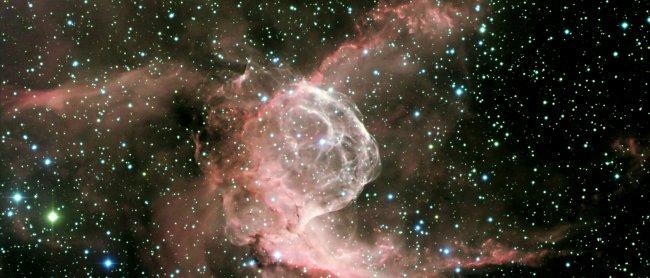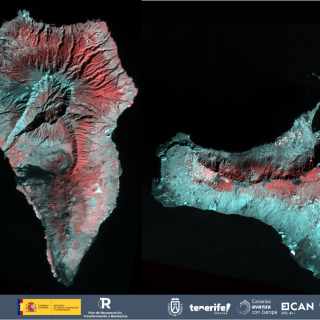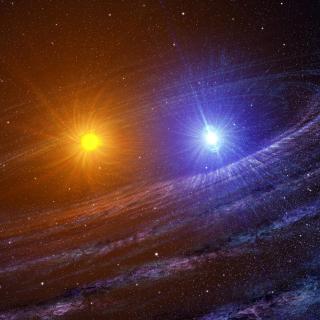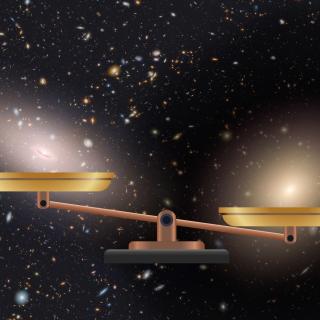During the Big Bang, which gave rise to our universe, only two chemical elements were formed in significant quantities, hydrogen and helium. Almost all the other elements, except those elements created by human beings, are produced in the stars during their lives and in processes associated with their deaths. In Astrophysics, the elements which are heavier than hydrogen and helium are called, generically, “metals” and the proportion of these elements in a cosmic object is termed its “metallicity”, whose average value has been growing continually with time within the galaxies. Among these “metals”, oxygen is the most abundant, and is therefore used widely as an index to estimate metallicities in general.
All spiral galaxies, such as the Milky Way, show a quantity of oxygen which falls off as we go further away from the galactic centre, and this is termed the “oxygen abundance gradient”. This behavior can be explained in terms of a number of different factors, firstly by the radial flows of gas within a galaxy disc, and secondly by the subsequent formation of stars. Almost 30 years ago indications were found that the slope of this gradient seemed to flatten in the outer reaches of the Milky Way, out beyond the “isophotal radius” which is at 37,500 light years from the Galactic centre. Until now, this supposed flattening did not have firm observational proof, because the ionized nebulae associated with star formation (so-called “HII regions”), which are the objects best suited for measuring the oxygen abundance, are very faint and difficult to observe in these distant regions.
However, thanks mainly to the OSIRIS spectrograph on the Gran Telescopio CANARIAS (GTC) at the Roque de los Muchachos Observatory (Garafía, La Palma), a research team from the IAC and the University of Hong Kong has been able to make precise measurements of the temperature in the nebulae in these external regions for the first time, and to determine the oxygen abundance. Their results, recently published in the journal Monthly Notices of the Royal Astronomical Society, show that this flattening does not exist, and that the gradient of oxygen is practically constant out to 55,500 light years from the centre of the Milky Way, a considerable fraction of the disc, which reaches out to a radius of some 70,000 light years.
“If the oxygen gradient in the outer zones of the disc of the galaxy presented a flattening -says César Esteban, professor at the University of La Laguna (ULL), researcher at the IAC and the first author of this study- it would mean that some complex and exotic mechanisms would be acting in these distant zones. For example, if the star formation efficiency remained constant, or the processes of radial mixing of gas were unusually efficient. Our results suggest that we can be calm about this, nothing strange appears to be occurring in the outskirts of the Milky Way”.
Jorge García Rojas, an IAC researcher and another of the authors of the article, explains that “the results we have obtained indicated that the mechanisms which govern star formation and chemical evolution in the Milky Way do not change significantly according to radial position in the Galaxy disc”.
Large telescopes
To obtain detailed spectra which allow to determine the temperature of the ionized gas of the nebulae, it has been essential to use large telescopes such as the GTC, of 10.4m, or the Very Large Telescope (VLT), a system of four 8.2m telescopes at the La Silla Observatory in Chile, belonging to the European Southern Observatory (ESO). “Until now -suggests Xuan Fang, researcher at the University of Hong Kong, who also participated in this study- we had spectra obtained with telescopes considerably smaller, and many of the chemical abundance determinations were indirect, without sufficient accuracy to establish the behavior we have found without the shadow of a doubt”.
“These results show that the most widely accepted models for the formation and evolution of the Milky Way, those referred to as “inside out”, can be applied to at least the greater part of the galactic disc” concludes one of those responsible for the research, Laura Toribio, who recently obtained her doctorate at the IAC.
Article: “The radial abundance gradient of oxygen towards the Galactic anticentre”/, por C. Esteban, X. Fang, J. García-Rojas and L. Toribio san Cipriano, Monthly Notices of the Royal Astronomical Society.
Article in astro-ph: https://arxiv.org/pdf/1706.07727.pdf
Artículo en Royal Astronomical Society: https://academic.oup.com/mnras/article-lookup/doi/10.1093/mnras/stx1624
Contact:
- César Esteban: cel [at] iac.es (cel[at]iac[dot]es) and +34922605200 (extension 5243)
- Jorge García Rojas: jogarcia [at] iac.es (jogarcia[at]iac[dot]es) and +34922605200 (extension 5311)




